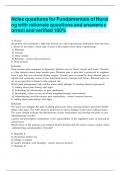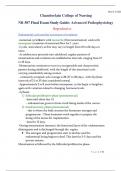College aantekeningen
College aantekeningen 1 t/m 7 (DT 1) Sensation and Perception Sensation & Perception, ISBN: 9781605358758
College aantekeningen van college 1 t/m 7, dus deeltentamen 1. Volledig met afbeeldingen erbij en zo veel mogelijk overgenomen wat de docent zei.
[Meer zien]














